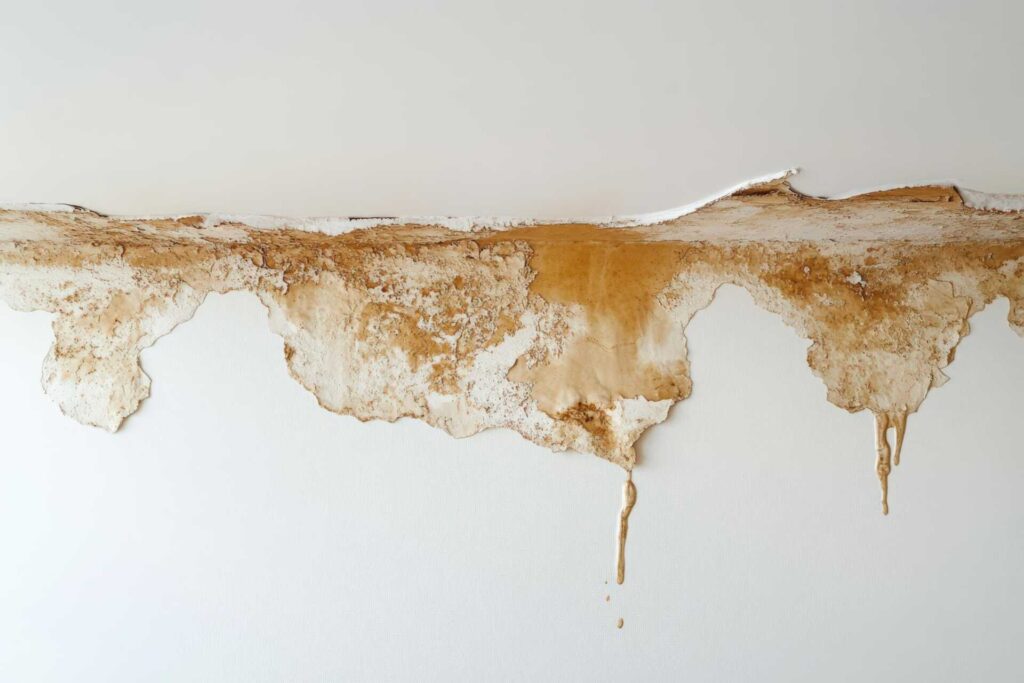When you notice a leak in your ceiling, it’s essential to act quickly to prevent further damage. Start by identifying the source of the leak, as this will guide your repair efforts. There are effective solutions available, ranging from simple fixes to more involved repairs. Understanding these options can save you time and money, but you’ll need to know which approach suits your situation best. Let’s explore your choices in detail.
Key Takeaways
- Identify the source of the leak by inspecting for damage, stains, and plumbing issues before proceeding with repairs.
- Use waterproof tape or a patch kit for immediate, temporary fixes to prevent further damage while planning permanent repairs.
- Replace damaged drywall to eliminate leak sources and ensure a long-lasting solution.
- Consider hiring professionals for extensive water damage to utilize specialized tools and techniques for effective restoration.
- Regularly inspect your ceilings to catch potential leaks early and mitigate costly repairs and mold growth.
Identify the Source of the Leak
How can you effectively pinpoint the source of a ceiling leak? Start by examining visible signs of damage. Look for water stains, which often appear as brown or yellowish patches on your ceiling. These stains can guide you to the leak’s origin.
Grab a flashlight and inspect the area above the stained ceiling. Check for any plumbing pipes, HVAC systems, or roofing issues that could be causing the leak.
Next, perform leak detection by examining your roof for missing shingles or damaged flashing, especially after heavy rain. If you can’t identify the source, consider using a moisture meter to detect hidden moisture behind your walls or ceilings.
Sometimes the leak’s source isn’t directly above the water stains. Being proactive and thorough in your investigation can save you from extensive damage down the road, ensuring your home remains a safe and cozy haven.
Temporary and Permanent Repair Solutions
Once you’ve identified the source of your ceiling leak, it’s vital to address the issue promptly with both temporary and permanent repair solutions.
For quick fixes, you can use waterproof tape or a patch kit to seal small leaks. These methods are great for immediate relief, preventing further damage while you plan for a more permanent solution. You might also consider using a bucket to catch any dripping water as a short-term measure.
For long-term strategies, replacing damaged drywall or applying a fresh coat of waterproof paint can ensure the leak doesn’t return. If your leak is caused by plumbing issues, fixing the pipes is essential for a lasting fix.
Professional Water Damage Restoration Services
When dealing with significant water damage, hiring professional restoration services can make all the difference in effectively resolving the issue.
These experts tackle the immediate problem and employ advanced restoration techniques to prevent future complications.
Here’s what you can expect:
Comprehensive Assessment: Professionals evaluate the extent of the damage, helping you understand the necessary steps.
Water Extraction: They utilize powerful equipment to remove standing water quickly, reducing the risk of mold growth.
Drying and Dehumidification: Experts ensure your space is thoroughly dried, using specialized tools to eliminate moisture from walls and floors.
Restoration and Repair: They’ll restore your home to its original condition, addressing any structural issues that arise from the water damage.
Final Thoughts
In the end, think of repairing your ceiling leak as mending a fragile fabric—each thread represents a step you take toward a safe home. By identifying the source, you’re patching the holes that let in trouble. Temporary fixes like waterproof tape are your quick stitches, while drywall replacement and waterproof paint serve as the quilt that protects you from future storms. Don’t overlook the power of professional help; they’re the skilled hands that ensure your fabric remains strong and resilient.

